CBRN: A Deadly and Serious Threat
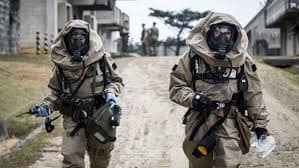
Today’s article will focus on Chemical, Biological, Radiological, and Nuclear threats, their effectiveness, and the likelihood of being used.
Please remember to keep the feedback and comments aligned with the topic and constructive. Feel free to pose different views and play “stump the chump” as dialogue is highly encouraged.
Lastly, if you have a topic in mind or want a topic covered, let us know, and we can look into it. Stay tuned for a future article with a Question and Answer format.
CBRN Studies and Research Facilities
In two small towns in Maryland, there are two linked facilities that specialize in CBRN studies, research, operations, tests, and defenses. These locations are some of the most sensitive and overlooked areas; Fort Detrich and Aberdeen Proving Grounds. Both sites have excellent facilities and include tests on living subjects. The purpose of this part of the post is to illustrate that CBRN is very important and taken very seriously, and both sites have helped share defensive know-how to experts across the globe on safety mitigations to these threats.
Historical Context and Modern Implications
The idea of using biological weapons to defeat an enemy force goes back to at least 1347. The intent then, as it is today, is not vastly different. Basically, use nature as a weapon to infect your opponent and make them weakened so you can defeat them. It’s that basic.
In fact, it has become more sinister and complex since then as now it includes weaponized agents that can be genetically engineered for various purposes. Some calculations on employment include attacking an enemy’s agriculture and population, targeting their health and morale. Even more specifically, it can target the financial and economic institutions of a nation via eroding the ability of a workforce to impact commodities.
Examples of this can be something like introducing a biological pathogen that targets a nation’s livestock, say pigs, perhaps, especially during heightened political tensions. This causes a ripple effect that strains a nation’s economy, which may already be suffering from famine and limited food as it is. In turn, this damages the weak civilian workforce, causing even further labor shortages to an already overburdened population that has little to eat anyways, which then forces the nation to concede to talks and which they back down.
Alternatively, a nation could introduce a biological pathogen that causes illness, however lethal, to a specific area with the intent of degrading the ability of the target audience to resist prolonged conflict, say, a siege.
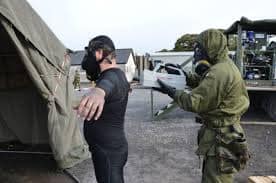
Challenges of Biological Weapons
The problem with biology and biological weapons is that “Nature adapts,” and wherever introduced, it will spread, however unintended, and it could pose a grave threat to the user, rendering it highly dangerous and counterproductive. Currently, there are several nations that have biological weapons programs or use the term “research facilities” that are similar but with a different intent behind them. The stark difference between these terms is small but important; it’s the engineering and development of biological agents that can be weaponized for offensive use versus the same with the intent to study and develop countermeasures and mitigation when faced with their employment as a weapon. It’s like a knife; we either own them to use as utensils or as a weapon to harm.
Chemical Weapons
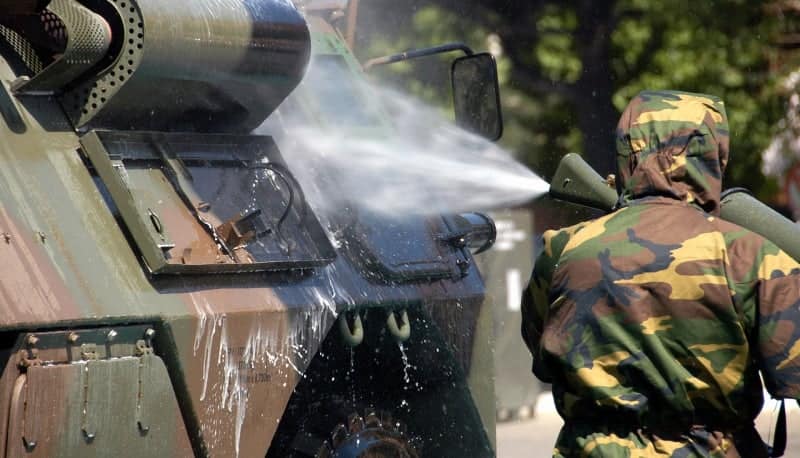
Chemical weapons can be subdivided into persistent agents and non-persistent agents. The difference between the two is how long they last on a surface and how they interact with environmental elements, such as sunlight or moisture. Their first major use was in the Great War, 1915. Since then, they have been used multiple times with deadly consequences. Interestingly, in the Second World War, they were not used.
From a military perspective, chemical weapons are a very dangerous threat to a military force. Despite numerous advances in technology and defenses, chemical weapons pose a grave threat to military operations and have a serious risk to mission accomplishment.
The reasons for this include psychological factors, degraded force capabilities as the defensive suits and mitigation posture degrade operations, movement, motor functions and force units to establish decontamination sites, routes, new operational areas with extreme precision, all in addition to having a war to fight. Also, there is no room for error with these kinds of operations.

Strategic Use of Chemical Weapons
Further, chemical weapons can be used against a population, causing an immense amount of fear and panic, as seen in Iraq in the late 1980s. This form of warfare, call it a terror attack, can force a nation to capitulate, directly affecting a military force’s ability to wage war.
Other considerations are the use of chemical weapons on staging areas or bases, which is a strategic-level concept. Such calculations can reduce a military from conducting a “forcible entry” operation, which could disrupt the strategic plans of a nation while reducing the chances of a reprisal as it’s a limited and calculated decision targeted against a vital piece of real estate prior to it being used as opposed to a population or military force.
History has shown chemical warfare to be somewhat effective but limited to just immediate gains and a psychological incentive, with little to show afterward.
Interestingly enough, chemical weapons may not be specialized at all. A crude chemical weapon can be commercial-grade pesticides that are placed into either drums or hollowed missile or artillery warheads. Do those constitute chemical weapons? What if they were separately stored? Is that a chemical weapon? Some would argue yes and some no, as this ties into the whole Iraq and WMD debate back in 2003. Iraq at the time did not possess military-grade chemical weapons. They tricked the world on that, but what they did have was commercial-grade chemicals within transportation distance to hollowed-out warheads. It’s best to leave the audience to make their own determination on whether or not these constitute chemical weapons.
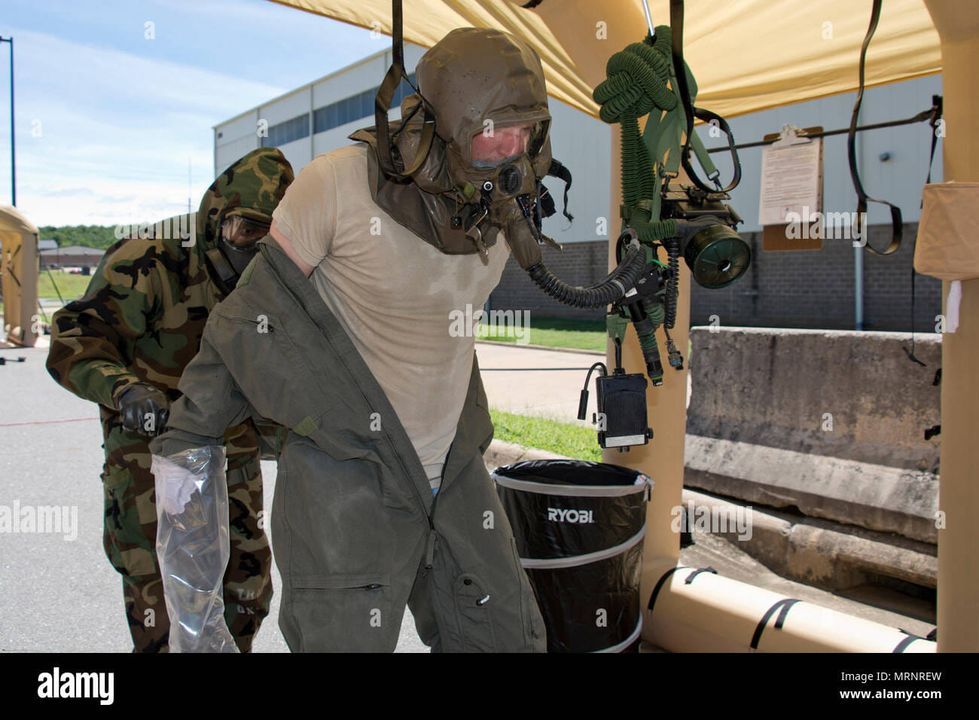
Nuclear and Radiological Weapons
Lastly, Nuclear and Radiological weapons are bottom-line game changers. A nation with nuclear weapons can far more easily deter foreign aggression with near certainty unless the other nation has superior nuclear weapons capability and drafts a diplomatic cable promising to not use them first and to not threaten the survival of the other state, thus implying their war aims are limited to conventional and non-strategic level objectives, which is no guarantee that it would be effective.
This scenario is where the United States and China are. In most cases, the US has both a conventional military and nuclear superiority over China, however, even with both, however, arguable for some, there is no guarantee that China will not use nuclear weapons against the US or its allies. Or vice versa. So thus, neither nation at this time wants to find out… yet.
Case Studies: Modern Nuclear Dynamics
Two particularly interesting case studies can also be found. One is the current state of conflict with Russia and Ukraine. The only reason why the United States has not decided to enter into the conflict against Russia is because of the real possibility of Russian nuclear weapons use and the threat of the world ending, at the very least, the end of Europe. Even if the likelihood of exchanges were to be kept regionally, it is still a game changer as no western nation will trade their capital and population for Kiev. To some, this may be a shock, but that’s the harsh reality. This equation also applies in a conventional war and assumes the US did not intervene but European nations had the option to, which they do not. In this case, Russian nuclear weapons would deter any European conventional interference, regardless of the US stance.

The second case study is India and Pakistan. India has a Cold Start doctrine that anticipates a swift and sudden offense into Pakistan, with the intended actions of rapid maneuver and speed to close with and “hug” Pakistani urban centers, which, in theory, will force Pakistan to refrain from using nuclear weapons on their own population and urban centers. I will leave the audience to judge the merit of that for themselves.
Implications and Concerns
CBRN warfare is dangerous and deadly. Any nation that attempts to employ one of these forms of weapons runs the risk of nuclear reprisals. There are no winners in this kind of warfare, however large or constrained. For the most part, it will be the people, the citizens, who suffer the burden, not the ones who order the launches.
Side note: Non-government actors are also players in this field but mostly use commercial-grade products and are unlikely to obtain genuine military-furnished CBRN weapons. As a case in point, even with Pakistan, their weapons are safeguarded by an exceptionally crack unit of Soldiers and the unspoken rumor has it that Pakistan has a mutual aid agreement with a 3rd party that in the event of potential loss, mitigation measures can be enacted. The audience can discern on their own what that means.
Future Outlook
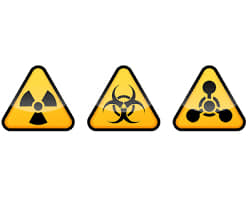
CBRN weapons and their likely use in the future is possible, as there are several possible scenarios, with one currently ongoing. One should remember that with all things, a rational calculation must weigh risk versus reward. A weaker nation may employ nuclear weapons in order to stop being overrun by a stronger force. However, if the stronger force has a superior nuclear force and can target and degrade or potentially even stop the smaller nation’s delivery systems or command-making process, that alters the calculation to a degree.
Some have warned that there is a possibility that continued western involvement in Ukraine and continued attempts to bring Ukraine into NATO could result in Russia using tactical nuclear weapons.
Even so, there are some people who even advocate that the west, specifically the US, should attack Russia directly and conventionally, even knowing that such an action will likely lead to a nuclear exchange. This then begs the question: Is it worth trading London, Paris, Berlin, New York, or DC for Kiev to be in NATO?
That depends. Probably best to ask the citizens of those countries first if they are willing to die in a nuclear war over Ukrainian NATO membership. For the proponents who advocate for such a war and or attack, this article asks why they are not in Ukraine at this very moment fighting then. I think we all know the reasons as to why.
Kindly,
Mel Daniels









